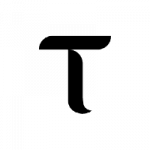Key Takeaways
- The intersection of AI and blockchains has created amazing opportunities for investors willing to take risks.
- While many projects are doomed to fail, a handful of established players are in the AI/blockchain space.
- The potential for AI blockchains seems high, but so is the risk. If you venture into the space, do so with caution and reasonable expectations.
The rapid rise of AI has surprised modern society. Advances and improvements are coming at breakneck speeds. In traditional markets, the increase in demand for AI-adjacent technologies has also influenced the fortunes of tech companies like NVIDIA.
Accordingly, we are seeing a similar disruption in the crypto markets with the rise of AI Tokens – projects that either actively develop AI solutions on blockchain platforms or create blockchain-based services that aid AI and machine learning companies.
Are AI tokens genuinely worth all the hype? Is a crypto-AI revolution on the horizon, and is there a way to invest safely in it?
These are some of the questions we will answer in this guide. We will also take a closer look at some of the best-performing AI tokens currently on the market so that you can make an informed decision.
The Bull Case for AI on Blockchains
AI and the blockchain are both technologies that can transform the way we handle everything online and even the global economy itself. The decentralization of the blockchain, combined with the autonomy provided by AI models, promises to increase productivity, lower costs, and streamline several industries. Investing early in the right combination of blockchain and AI technology and its associated token may net you massive gains in the future.
The Bear Case for AI on Blockchains
Thanks to rapid advances in recent years, AI has emerged as the latest buzzword in technology. While some use cases exist where combining AI with blockchain technology can deliver good results, these are currently fewer than the hype suggests. The stated objectives of many AI token projects are either impractical or overly ambitious and come with a high degree of risk. In some cases, projects merely tack on the notion of using AI to drive up interest without delivering much in the way of AI features. This approach could mean interest in this market sector will be short-lived and built primarily on hype.
Top AI Tokens and Coins
 Bittensor (TAO)
Bittensor (TAO)
Bittensor is a highly ambitious AI blockchain project that was conceived in 2019. It aims to create a decentralized marketplace where peers can sell computing resources openly in exchange for rewards.
At present, large organizations like OpenAI and Google spend billions of dollars to buy the expensive hardware needed to power AI research. Even smaller developers and startups must lease computing resources from cloud service providers like Amazon, which can quickly balloon in scale (and price).
Bittensor aims to mitigate some of these limited resource issues by providing a transparent, decentralized alternative to such services. Nodes on the network can donate GPU resources to other nodes to support high-performance workflows for projects like AI.
Native Token
The native token of the Bittensor project is called TAO. It acts as the reward token for the following parties on the blockchain:
- For miners who contribute computing resources to various AI subnets on the platform.
- For validators who stake their TAO to validate transactions and ensure network security.
Traders and investors can buy and sell TAO through significant exchanges like Binance, KuCoin, and MEXC.
TAO was designed to be a token with finite limits, like bitcoin. Only 21 million TAO can ever be mined. At present, around 7,200 TAOs are being issued to miners and validators every day on Bittensor.
Future Prospects
As a blockchain project, Bittensor is growing rapidly due to the recent hype generated by AI. At its peak of $730 on March 8, 2024, the token value increased 1825% in a single year. The market cap has breached the $10 billion mark as of Q1 2024.
Much of that growth is based on hype and hope of future adoption. Although Bittensor’s decentralized AI approach has great potential, it is also incredibly ambitious and involves major feasibility, governance, privacy, and security challenges.
The blockchain currently has 32 different subnets or unique marketplaces focusing on various AI applications like healthcare diagnostics, AI text and chat, and pre-training. Bittensor hopes to expand to over 1000 subnets.
If Bittensor can deliver on its promise of a thriving AI marketplace, it may become one of the most valuable blockchains in crypto. However, there are far too many unknown variables in the AI and blockchain realms to make any solid predictions.
 Render Network (RNDR)
Render Network (RNDR)
The Render Network is a blockchain project founded by Otoy in 2016 and officially launched in 2020. Like Bittensor, it seeks to pool computing resources from idle graphics processors (GPUs) and sell them to users who need GPU power to render images and videos.
Originally launched on the Polygon blockchain, Render Network completed its migration to Solana in late 2023. The move was implemented to facilitate major upgrades to the network’s tokenomics and other features.
Native Token
RNDR/RENDER is the native token of the Render Network. The token exists on Ethereum/Polygon as RNDR, while it is called RENDER on Solana.
After the upgrades, the maximum supply of RNDR was reduced to 536 million tokens from its original value of 2.147 billion.
Like TAO, it can be used as a staking token for validator services and to reward node operators who provide GPU services to the network.
A total of 381 million RNDR tokens have already been released. Over 55% of the total supply is available for sale – people who want to buy GPU services on the network can use the token to pay the node providers.
Future Prospects
The price of RNDR has witnessed massive gains in recent months. From a low of $1.3 in September 2023, the token peaked at $13 in March, a 1000% increase. Although it has since corrected to around $8 at the time of writing, it still represents gains of 350% year-on-year. And as they say - buy the dip.
This meteoric rise can be attributed to two main reasons:
- Otoy’s OctaneX app launched on the Apple ecosystem, with the option for users to access the Render Network.
- Render Network’s decision to venture beyond basic GPU rendering services to include AI image generation and editing.
Otoy is already an established name in the cloud-based rendering space. Their services are used in diverse industries, such as video game development and movies. Since GPUs are in high demand for AI development these days, Render Network’s pivot makes a lot of sense.
 The Graph (GRT)
The Graph (GRT)
The Graph is a highly respected blockchain project that launched on the Ethereum blockchain in 2018. Technically, this is not an AI token project—in simple terms, It was developed to act as a decentralized data analysis platform.
Many organizations maintain highly organized data structures on the Internet. These indexes allow users to quickly search and find information from the vast troves of online data. Blockchain networks also require a similar indexing service.
The Graph serves a valuable purpose in the blockchain space, helping make services like dApps genuinely decentralized. It allows developers of Web3 apps and services to find essential blockchain data through queries and APIs (also called sub-graphs) and then use that data to build serverless applications.
Because The Graph is concerned with collecting and organizing blockchain data it could also be very useful in the future training of AI models that are integrated or dependent on blockchains in some way.
Overall, The Graph addresses some of the critical data usability and accessibility challenges in the blockchain space, promoting broader development and adoption of dApps. As Web3 matures, The Graph could become an integral part of the dApp ecosystem.
Native Token
GRT is the native token of The Graph protocol. To function as a decentralized indexing network, the Graph relies on several types of participants, such as Indexers, Curators, and Delegations. The GRT token is used to incentivize the participation of individuals (or teams) in the network.
Although Web3 developers and other technical roles are the main users of the GRT token, anyone can buy it on exchanges like Kraken, KuCoin, and Binance. In addition to its other use cases, GRT also functions as the protocol's governance token.
The total supply of GRT is 10.7 billion coins, of which 9.4 billion are already in circulation. You can stake the coin in delegator nodes to help secure the blockchain and earn some network query fees as rewards.
Future Prospects
Since Q4 2023, the price of GRT has steadily rallied from a low of $0.07 to a peak of $0.44 in Q1 2024. At the time of writing, the token was trading at $0.31 after some major corrections. The token's market cap has more than quadrupled in six months.
Although The Graph has no direct AI exposure, that could change dramatically if more dApps and blockchain services integrate algorithms. All services need blockchain data, and The Graph is the leading name in decentralized data indexing.
The current rally is almost entirely due to the broader bullish sentiments in the market and AI hype. If the role of AI in blockchain expands, GRT and The Graph will be at the center of it all. Due to its solid foundations, this project is worth watching for the long term.
 Fetch.ai (FET)
Fetch.ai (FET)
Fetch.ai is another highly ambitious project like Bittensor. It intends to create a decentralized network of AI services. The plan is to create a platform where users can pay for “AI Agents,” software that can execute various online tasks independently of human supervision.
The team behind Fetch.ai envisions a future where you can use an AI agent to automatically handle all your online shopping, booking of travel tickets based on your schedule, and so on. They also have plans to venture into the automation of DeFI and other business services.
Based in Cambridge, UK, Fetch.ai has been around since 2019. The team has forged partnerships with major organizations like Deutsche Telekom and Bosch to deliver AI Agent services.
Native Token
On the blockchain side, FET is the native token of the Fetch.ai protocol on the Ethereum blockchain. It will primarily pay for AI Agent services on the platform and reward other participants, such as data providers and node operators.
Further, you can also stake FET on the nodes to earn rewards. Currently, the APY for staking is 8.99%, but that is subject to change based on network conditions. The token supply is capped at 1.152 billion, and the current circulating supply is 845 million. FET is available for trading on all major markets, such as Binance, Coinbase, KuCoin, Kraken, and Bybit.
Future Prospects
In 2024, the price of FET grew by nearly 914% in just five months, from $0.35 (November 2023) to $3.2 (March 2024). The market cap ballooned from $437 million to $2.7 billion in less than two months.
This kind of growth is driven purely by hype and market sentiment. Although Fetch.ai has a strong development team and well-known enterprise partners, they still work in a very young and rapidly evolving market.
The project still lacks a viable product, and there are no real guarantees that it will be able to develop such a service. However, if it ever does, Fetch.ai may live up to its current hype.
Other Promising AI/Blockchain Projects
Ocean Protocol (OCEAN)
Ocean Protocol aims to create a trading ecosystem for data on the blockchain. Such a data exchange could provide AI/ML developers with high-quality data sets for securely training their models.
Numerai (NMR)
Numerai is a unique blockchain protocol owned by a hedge fund. It runs data science tournaments that challenge participants to create AI data models that can improve and enhance the fund’s investment returns.
Injective (INJ)
Injective is a DeFI-focused Layer-1 blockchain developing next-generation finance apps for prediction markets, spot and derivative trading, and more. To make these apps more accurate and efficient, the protocol uses elements of AI.
SingularityNET (AGIX)
Like Fetch.ai, SingularityNET is trying to build a marketplace where anybody can create, share, and sell AI services and tools. The team behind the project is famous for developing Sophia, the world's most expressive robot.
Investment Strategies for AI Tokens
The investment strategy for AI tokens is not dramatically different from the ones we recommend for regular tokens. The fundamentals remain the same – do your research and don’t get carried away by rapidly rising token prices or market capitalization.
Due Diligence
Although helpful in comparing various tokens and projects, metrics like token market cap are not reliable indicators of the future success of an AI project. Instead, focus on these fundamentals before making an investment decision:
- Use Case: Is the project trying to solve real-world problems in a way that is superior to any existing solutions? If the problem can be solved efficiently without blockchain technology, the project will not have a long-term future.
- Developers: As with any other crypto project, always look closely at the team behind the AI token. Are they experienced professionals or academics with long and credible track records in AI, blockchain, or related fields?
- Collaborations: Look for reports of mainstream enterprises collaborating with the AI token project to develop marketable services or solutions. Even if success is not guaranteed in these endeavors, it is at least a good sign of a credible project.
- Community: Many AI token projects target DeFi and other blockchain developers. Check the level of developer participation on the platform and in the wider online communities linked to the project. If there is no significant developer activity, the token is not safe.
- Competition: The AI token space is quite active, and many projects compete for investors' attention. Check if a token has any direct rivals offering similar or better solutions. Look for signs of competitive advantages or disadvantages.
Apart from the above, due diligence also involves reading the project white paper and studying the tokenomics model of the project, planned roadmap, any potential regulatory compliance issues, and track record in security.
Diversification
AI tokens exist in a particularly high-risk space within the wider crypto markets. Diversification is a key component of success. We recommend a maximum allocation of 10% to crypto as part of our Blockchain Believers Portfolio.
Using the same logic, consider restricting your AI token investments to just 10% of your total crypto allocations. The quantum of long-term risk here is too high to recommend any more than that under the present market conditions.
Where’s the Risk?
There are several reasons why blockchain experts consider AI tokens to be a relatively high-risk crypto investment option. We can boil it down to the following broad factors:
Hype
Investor sentiments in crypto markets are often driven by hype and narratives that often have limited connection to objective reality. In 2024, with the spectacular advances made by companies like OpenAI and Nvidia, AI has become a buzzword.
Since the end of 2023, many tokens have benefited from this hype. While some have authentic and well-recognized developer teams, many more try to cash in on the hype by adding terms like “AI” or “GPT” to their names.
Feasibility
Blockchain and AI are two distinct technologies. While there are hypothetical scenarios or situations where combining the two can deliver actual value, we are still far away from the delivery stages.
Nothing is certain; even projects led by talented AI experts have a high risk of failure. The recent 900x and 1000x spikes in AI token valuations are all based on speculation and hope – on the slim chance these projects will create value in the future.
Regulations
OpenAI faces major regulatory challenges and lawsuits related to privacy concerns and intellectual property violations. AI is a new technology, and the regulations are still playing catch-up.
To complicate matters further, the blockchain ecosystem is under significant regulatory pressure in the US and the EU. The quantum of potential regulatory risk associated with AI tokens is astronomically high.
Investor Takeaway
The AI-blockchain ecosystem is in its very early stages of existence. The combination of extreme market volatility, rapidly evolving technology, and potential compliance issues make AI tokens an extremely high-risk proposition even in the volatile crypto-investing space.
Under these circumstances, the safest option is to adopt a highly conservative investment strategy—conduct extensive research, avoid investing based on hype or token price, and try to keep it to a small portion of your total crypto portfolio.
With our focus on stable, long-term investing, Bitcoin Market Journal can help you stay calm in the volatile crypto world. Subscribe today to take advantage of our long-term view of the crypto markets.


